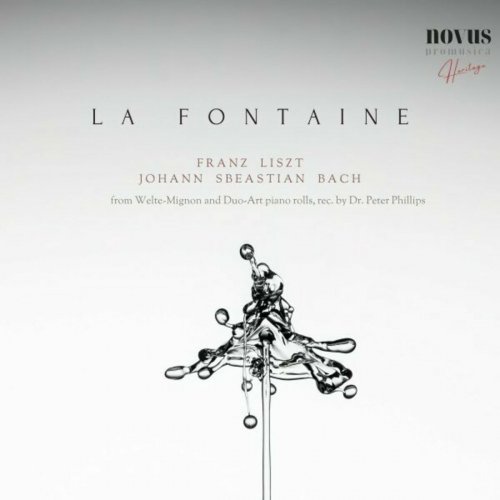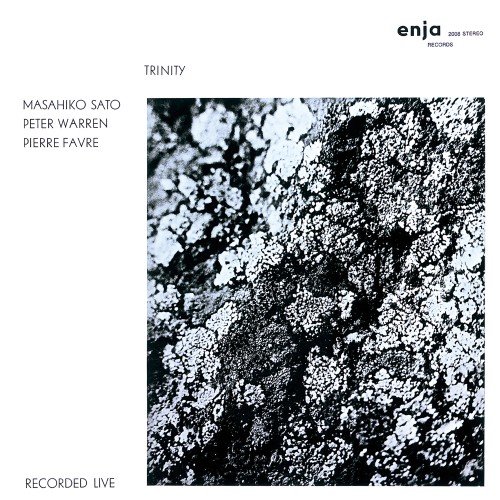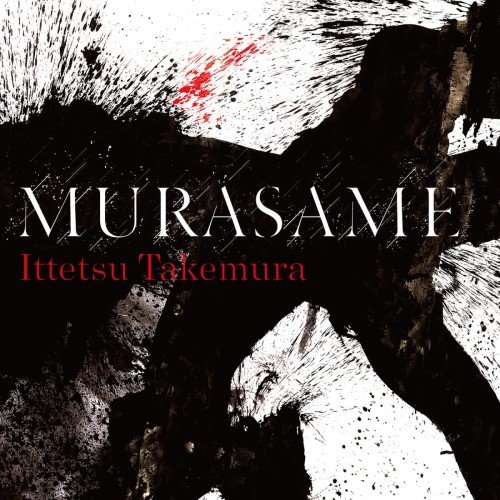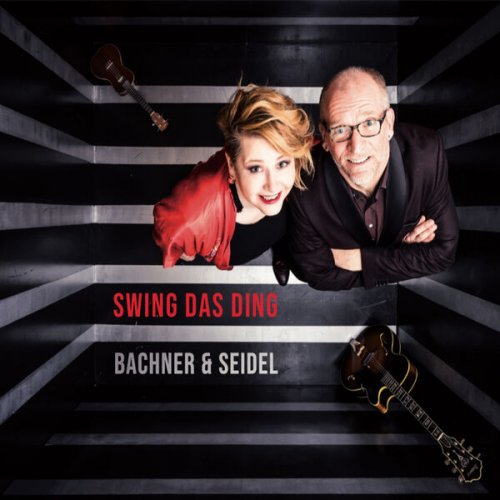Maria Carreras - La Fontaine. Liszt and Bach from the Golden Age (2024)

Artist: Maria Carreras, Franz Liszt, Johann Sebastian Bach
Title: La Fontaine. Liszt and Bach from the Golden Age
Year Of Release: 2024
Label: Novus Promusica
Genre: Classical
Quality: FLAC (tracks)
Total Time: 107:53 min
Total Size: 351 MB
WebSite: Album Preview
Tracklist:Title: La Fontaine. Liszt and Bach from the Golden Age
Year Of Release: 2024
Label: Novus Promusica
Genre: Classical
Quality: FLAC (tracks)
Total Time: 107:53 min
Total Size: 351 MB
WebSite: Album Preview
01. La Fleurie, Ou La Tendre Nannette (Arr. Solo Piano by Jeanne-Marie Darrédarré) (Duo-Art 075 Br)
02. La Fontaine, Op. 34 (Duo-Art 6348)
03. Hungarian Rhapsodies, S. 244: Hungarian Rhapsody No. 10 (Duo-Art 5898)
04. Annees De Pelerinage. 1st Year. No. 7 (Eglogue; Ecologue) (Duo-Art 74010)
05. Annees De Pelerinage. 1st Year: No. 8 (Le Mal Du Pays; Longing for Home) (Duo-Art 70500)
06. Annees De Pelerinage. 2nd Year.: No. 3, Canzonetta Del Salvator Rosa (Duo-Art 5574)
07. Hungarian Rhapsodies, S.244: Hungarian Rhapsody No. 11 (Duo-Art 6135)
08. Legende No. 1, S. 175, St Francis of Assisi Preaching to the Birds (Welte-Mignon 1031)
09. Paganini Etudes, S. 161: No. 3, :La Campanella:
10. Don Giovanni: Fantasia (Arr. Solo Piano by Liszt) (Welte-Mignon 876)
11. Schwanengesang D. 957: No. 12, Am Meer (By the Sea, Arr. Solo Piano by Liszt) (Duo-Art:71449)
12. Prelude in E Minor, BWV 555 (Arr. By Siloti) (Duo-Art:66329)
13. Violin Sonata No. 2: Bourree in B Minor (Transcription by Saint-Saens) (Duo-Art 67719)
14. Well Tempered Clavier, Book I: Prelude No. 12 in F Minor, BWV 857 (Welte-Mignon 2965)
15. Well Tempered Clavier, Book I: Fugue No. 12, BWV 857 (Welte-Mignon 2965)
16. Well Tempered Clavier, Book I: Prelude No. 5 in D Major, BWV 850 (Welte-Mignon 1836)
17. Well Tempered Clavier, Book I: Fugue No. 5 in D Major, BWV 850 (Welte-Mignon 1836)
18. Two Part Inventions: No. 1, BWV 772 (Duo-Art 6392)
19. Two Part Inventions: No. 6, BWV 777 (Duo-Art 6392)
20. Two Part Inventions: No. 8, BWV 779 (Duo-Art 6392)
21. French Suite No.6 in E Major, BWV 817: Pt. 2, Sarabande (Duo-Art 7081)
22. French Suite No. 6: Part 1: Allemande, Courante (Duo-Art 7080)
23. Partita No. 1, BWV 825: No. 7, Gigue in B-Flat Major (Duo-Art 0216 Br)
24. Chromatic Fantasia and Fugue in D Minor BWV. 903: Fantasia (Duo-Art 7316)
25. Chromatic Fantasia and Fugue in D Minor BWV. 903: Fugue (Duo-Art 7317)
26. Gavotte and Variations (Arr. By Leschetizky) (Duo-Art 6217)
27. Gigue (Arr. Solo Piano by Macdowell) (Duo-Art 6083)
Liszt was the only contemporary whose music Richard Wagner gratefully acknowledged as an influence upon his own. His lasting fame was an alchemy of extraordinary digital ability -- the greatest in the history of keyboard playing -- an unmatched instinct for showmanship, and one of the most progressive musical imaginations of his time. Hailed by some as a visionary, reviled by others as a symbol of empty Romantic excess, Franz Liszt wrote his name across music history in a truly inimitable manner.
From his youth, Liszt demonstrated a natural facility at the keyboard that placed him among the top performing prodigies of his day. Though contemporary accounts describe his improvisational skill as dazzling, his talent as a composer emerged only in his adulthood. Still, he was at the age of eleven the youngest contributor to publisher Anton Diabelli's famous variation commissioning project, best remembered as the inspiration for Beethoven's final piano masterpiece. An oft-repeated anecdote -- first recounted by Liszt himself decades later, and possibly fanciful -- has Beethoven attending a recital given by the youngster and bestowing a kiss of benediction upon him.
Though already a veteran of the stage by his teens, Liszt recognized the necessity of further musical tuition. He studied for a time with Czerny and Salieri in Vienna, and later sought acceptance to the Paris Conservatory. When he was turned down there -- foreigners were not then admitted -- he instead studied privately with Anton Reicha. Ultimately, his Hungarian origins proved a great asset to his career, enhancing his aura of mystery and exoticism and inspiring an extensive body of works, none more famous than the Hungarian Rhapsodies (1846-1885).
Liszt soon became a prominent figure in Parisian society, his romantic entanglements providing much material for gossip. Still, not even the juiciest accounts of his amorous exploits could compete with the stories about his wizardry at the keyboard. Inspired by the superhuman technique -- and, indeed, diabolical stage presence -- of the violinist Paganini, Liszt set out to translate these qualities to the piano. As his career as a touring performer, conductor, and teacher burgeoned, he began to devote an increasing amount of time to composition. He wrote most of his hundreds of original piano works for his own use; accordingly, they are frequently characterized by technical demands that push performers -- and in Liszt's own day, the instrument itself -- to their limits. The "transcendence" of his Transcendental Etudes (1851), for example, is not a reference to the writings of Emerson and Thoreau, but an indication of the works' level of difficulty. Liszt was well into his thirties before he mastered the rudiments of orchestration -- works like the Piano Concerto No. 1 (1849) were orchestrated by talented students -- but made up for lost time in the production of two "literary" symphonies (Faust, 1854-1857, and Dante, 1855-1856) and a series of orchestral essays (including Les préludes, 1848-1854) that marks the genesis of the tone poem as a distinct genre.
After a lifetime of near-constant sensation, Liszt settled down somewhat in his later years. In his final decade he joined the Catholic Church and devoted much of his creative effort to the production of sacred works. The complexion of his music darkened; the flash that had characterized his previous efforts gave way to a peculiar introspection, manifested in strikingly original, forward-looking efforts like Nuages gris (1881). Liszt died in Bayreuth, Germany, on July 31, 1886, having outlived Wagner, his son-in-law and greatest creative beneficiary.
From his youth, Liszt demonstrated a natural facility at the keyboard that placed him among the top performing prodigies of his day. Though contemporary accounts describe his improvisational skill as dazzling, his talent as a composer emerged only in his adulthood. Still, he was at the age of eleven the youngest contributor to publisher Anton Diabelli's famous variation commissioning project, best remembered as the inspiration for Beethoven's final piano masterpiece. An oft-repeated anecdote -- first recounted by Liszt himself decades later, and possibly fanciful -- has Beethoven attending a recital given by the youngster and bestowing a kiss of benediction upon him.
Though already a veteran of the stage by his teens, Liszt recognized the necessity of further musical tuition. He studied for a time with Czerny and Salieri in Vienna, and later sought acceptance to the Paris Conservatory. When he was turned down there -- foreigners were not then admitted -- he instead studied privately with Anton Reicha. Ultimately, his Hungarian origins proved a great asset to his career, enhancing his aura of mystery and exoticism and inspiring an extensive body of works, none more famous than the Hungarian Rhapsodies (1846-1885).
Liszt soon became a prominent figure in Parisian society, his romantic entanglements providing much material for gossip. Still, not even the juiciest accounts of his amorous exploits could compete with the stories about his wizardry at the keyboard. Inspired by the superhuman technique -- and, indeed, diabolical stage presence -- of the violinist Paganini, Liszt set out to translate these qualities to the piano. As his career as a touring performer, conductor, and teacher burgeoned, he began to devote an increasing amount of time to composition. He wrote most of his hundreds of original piano works for his own use; accordingly, they are frequently characterized by technical demands that push performers -- and in Liszt's own day, the instrument itself -- to their limits. The "transcendence" of his Transcendental Etudes (1851), for example, is not a reference to the writings of Emerson and Thoreau, but an indication of the works' level of difficulty. Liszt was well into his thirties before he mastered the rudiments of orchestration -- works like the Piano Concerto No. 1 (1849) were orchestrated by talented students -- but made up for lost time in the production of two "literary" symphonies (Faust, 1854-1857, and Dante, 1855-1856) and a series of orchestral essays (including Les préludes, 1848-1854) that marks the genesis of the tone poem as a distinct genre.
After a lifetime of near-constant sensation, Liszt settled down somewhat in his later years. In his final decade he joined the Catholic Church and devoted much of his creative effort to the production of sacred works. The complexion of his music darkened; the flash that had characterized his previous efforts gave way to a peculiar introspection, manifested in strikingly original, forward-looking efforts like Nuages gris (1881). Liszt died in Bayreuth, Germany, on July 31, 1886, having outlived Wagner, his son-in-law and greatest creative beneficiary.
![Bill Ware and the Club Bird All Stars - Martian Sunset (2025) [Hi-Res] Bill Ware and the Club Bird All Stars - Martian Sunset (2025) [Hi-Res]](https://www.dibpic.com/uploads/posts/2025-11/1764169097_p8da7t28z4iuc_600.jpg)




![Lettuce - Cook (2025) [Hi-Res] Lettuce - Cook (2025) [Hi-Res]](https://www.dibpic.com/uploads/posts/2025-12/1764682914_cover.jpg)
![Stefano Boggiani - Andvake (2025) [Hi-Res] Stefano Boggiani - Andvake (2025) [Hi-Res]](https://www.dibpic.com/uploads/posts/2025-11/1764304210_cover.jpg)
![Ari Colares, Marcelo Jaffe, Edu Ribeiro, Ensemble SP - Do Carimbó Ao Chamamé (2025) [Hi-Res] Ari Colares, Marcelo Jaffe, Edu Ribeiro, Ensemble SP - Do Carimbó Ao Chamamé (2025) [Hi-Res]](https://www.dibpic.com/uploads/posts/2025-12/1764583700_xgnvtsn7zc8qb_600.jpg)
![Cesare Pizzetti - Make It Happen (2025) [Hi-Res] Cesare Pizzetti - Make It Happen (2025) [Hi-Res]](https://www.dibpic.com/uploads/posts/2025-11/1764319358_cover.jpg)